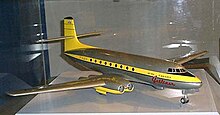
Avro was a British aircraft manufacturer. Its designs include the Avro 504, used as a trainer in the First World War, the Avro Lancaster, one of the pre-eminent bombers of the Second World War, and the delta wing Avro Vulcan, a stalwart of the Cold War.

The Avro Canada CF-105 Arrow was a delta-winged interceptor aircraft designed and built by Avro Canada. The CF-105 held the promise of Mach 2 speeds at altitudes exceeding 50,000 feet (15,000 m) and was intended to serve as the Royal Canadian Air Force's (RCAF) primary interceptor into the 1960s and beyond.
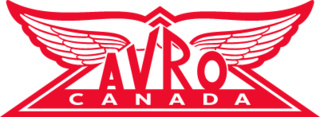
Avro Canada was a Canadian aircraft manufacturing company. It was founded in 1945 as an aircraft plant and within 13 years became the third-largest company in Canada, one of the largest 100 companies in the world, and directly employing over 50,000. Avro Canada was best known for the CF-105 Arrow, but through growth and acquisition, it rapidly became a major, integrated company that had diverse holdings.

A jet airliner or jetliner is an airliner powered by jet engines. Airliners usually have two or four jet engines; three-engined designs were popular in the 1970s but are less common today. Airliners are commonly classified as either the large wide-body aircraft, medium narrow-body aircraft and smaller regional jet.

Hawker Siddeley was a group of British manufacturing companies engaged in aircraft production. Hawker Siddeley combined the legacies of several British aircraft manufacturers, emerging through a series of mergers and acquisitions as one of only two such major British companies in the 1960s. In 1977, Hawker Siddeley became a founding component of the nationalised British Aerospace (BAe). Hawker Siddeley also operated in other industrial markets, such as locomotive building and diesel engine manufacture. The company was once a constituent of the FTSE 100 Index.

The Avro Canada C102 Jetliner was a Canadian prototype medium-range turbojet-powered jet airliner built by Avro Canada in 1949. It was beaten to the air by only 13 days by the de Havilland Comet, thereby becoming the second purpose-built jet airliner in the world, while both were preceded by the Nene Lancastrian, and the Nene Viking, both of which were conversions of piston engine airliners. The name "Jetliner" was chosen as a shortening of the term "jet airliner", a term which is still in popular usage. The aircraft was considered suitable for busy routes along the US eastern seaboard and garnered intense interest, notably from Howard Hughes who even offered to start production under license. However, continued delays in Avro Canada's all-weather interceptor project, the CF-100 Canuck, led to an order to stop working on the project in 1951, with the prototype Jetliner later cut up for scrap.

Sir Sydney Camm, CBE, FRAeS was an English aeronautical engineer who contributed to many Hawker aircraft designs, from the biplanes of the 1920s to jet fighters. One particularly notable aircraft he designed was the Hawker Hurricane fighter.

The Avro Canada CF-100 Canuck is a Canadian twinjet interceptor/fighter designed and produced by aircraft manufacturer Avro Canada. It has the distinction of being the only Canadian-designed fighter to enter mass production.
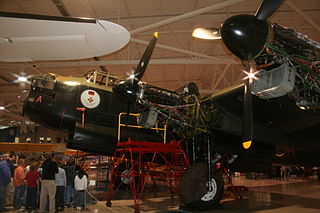
Victory Aircraft Limited was a Canadian manufacturing company that, during the Second World War, built mainly British-designed aircraft under licence. It acted as a shadow factory, safe from the reach of German bombers.

Crawford Gordon Jr. was a leader of wartime defence production in Canada under Minister of Munitions and Supply C.D. Howe during the Second World War. He was perhaps one of the greatest industrialists and business minds in Canadian history; Gordon bought two companies and held one CEO position, but eventually lost it all.
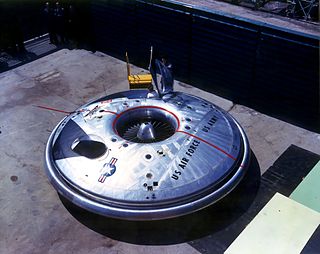
The Avro Canada VZ-9 Avrocar was a VTOL aircraft developed by Avro Canada as part of a secret U.S. military project carried out in the early years of the Cold War. The Avrocar intended to exploit the Coandă effect to provide lift and thrust from a single "turborotor" blowing exhaust out of the rim of the disk-shaped aircraft. In the air, it would have resembled a flying saucer.
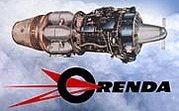
Orenda Engines was a Canadian aircraft engine manufacturer and parts supplier. As part of the earlier Avro Canada conglomerate, which became Hawker Siddeley Canada, they produced a number of military jet engines from the 1950s through the 1970s, and were Canada's primary engine supplier and repair company.
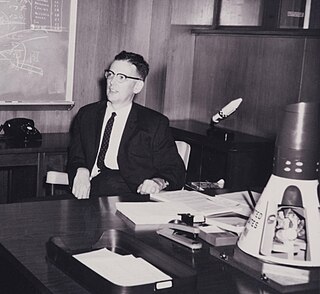
James Arthur Chamberlin was a Canadian engineer who contributed to the design of the Canadian Avro Arrow, NASA's Gemini spacecraft and the Apollo program. In addition to his pioneering air and space efforts, he is often cited as an example of Canadian brain drain to the U.S. In the early 1960s, he was one of the key people that proposed and moved that Lunar Orbit Rendezvous (LOR) was the best option for landing a crew on the Moon, the method eventually used on Apollo lunar landing missions. He left NASA in 1970 and worked for McDonnell Douglas, in their Houston offices, until his death in 1981.
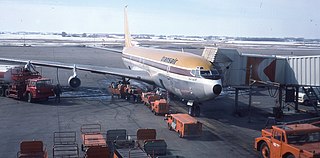
Transair was an airline based in Canada. It was purchased by Pacific Western Airlines in 1979. Transair's operational headquarters was located at the Winnipeg International Airport in Manitoba.

John Carver Meadows Frost was a British aircraft designer. His primary contributions centred on pioneering supersonic British experimental aircraft and as the chief designer who shepherded Canada's first jet fighter project, the Avro Canada CF-100, to completion. He was also the major force behind the Avro Canada VTOL aircraft projects, particularly as the unheralded creator of the Avro Canada flying saucer projects.
Frederick Thomas Smye was a Canadian businessman. He was the president of Avro Aircraft Limited (Canada).

The Aerospace Heritage Foundation of Canada is a federally chartered and non-profit organization based in Etobicoke, Toronto, Ontario, that is dedicated to preserving and promoting the achievements of the Canadian aerospace industry.

The Avro Canada CF-103 was a proposed Canadian interceptor, designed by Avro Canada in the early 1950s as a development, and possible replacement of the company's CF-100 Canuck, that was entering service at the time with the Royal Canadian Air Force (RCAF). Although intended to be capable of flying at transonic speeds, the CF-103 only offered a moderate increase in performance and capability over the CF-100; subsequently, the aircraft never progressed beyond the mock-up stage.

Owen Eugene Maynard was a Canadian engineer who contributed to the designs of the Canadian CF-105 Avro Arrow jet interceptor, and of NASA's Apollo Lunar Module (LM). Maynard was a member of the group of 32 Canadian and British engineers from Avro Canada who joined NASA when the Arrow was cancelled in 1959. Maynard worked on Project Mercury until 1960 and then moved to the Apollo program. Maynard won a U.S. patent (US3300162) in 1967 for a space station design.

Tecwyn Roberts was a Welsh spaceflight engineer who in the 1960s played important roles in designing the Mission Control Center at NASA's Johnson Space Center in Houston, Texas and creating NASA's worldwide tracking and communications network.

